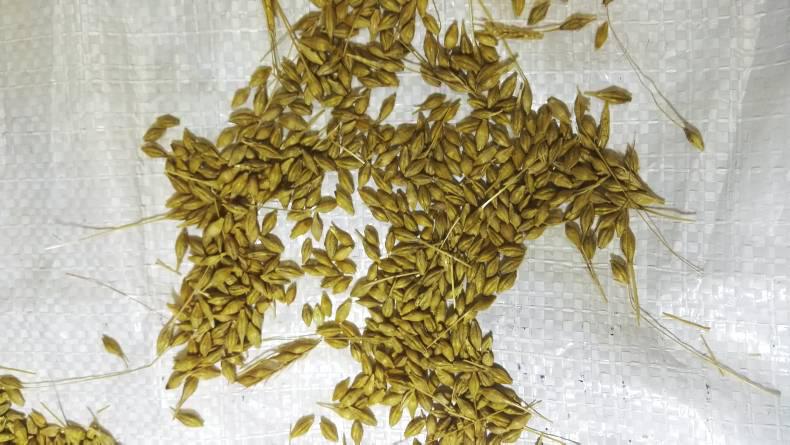Skinned grain has already emerged as a quality issue in malt barley this harvest. With the malt bonus important to growers this year, this is bad news. The good news is that there are, it seems, simple measures farmers can take to mitigate against having their barley rejected due to skinned grains.
 Stripping or skinned grain (photo, right) has raised its head in recent years, most notably in 2012 in Wexford and last year in Laois. This year’s spring barley harvest is in its infancy, with only a small percentage of grain yet cut. Almost all of this was sown in the first window weather of the spring, back around 10 March. It may be that it won’t be as big an issue in the main crop.
Stripping or skinned grain (photo, right) has raised its head in recent years, most notably in 2012 in Wexford and last year in Laois. This year’s spring barley harvest is in its infancy, with only a small percentage of grain yet cut. Almost all of this was sown in the first window weather of the spring, back around 10 March. It may be that it won’t be as big an issue in the main crop.
It is emerging across the Boortmalt region so far, and across a number of varieties. Anecdotal evidence suggests that it is not a major issue to date in Munster, but farmers need to be watchful.
The standard
Boortmalt has set a limit of 4% of a grain sample that can be classified as skinned grain. A grain may pass if partially skinned – Boortmalt only rejects an individual grain if more than 50% of the grain’s surface is skinned. Some of the grains in Picture 2 would be classified as skinned. Broken grains are classified as skinned.
Factors
Boortmalt believes that cutting under-ripe barley increases the amount of skinning, and increases the possibility of grain rejection. They counsel against cutting grain that is not fully ripe. There is the possibility the awn of a grain that is not fully ripe, when stripped from the grain, will peel some skin off the grain.
Threshing is how the grain is taken from the barley head, and how the awn is taken from the grain. Normally the aim is to remove all awns to leave as clean a sample as possible, but research carried out by Boortmalt in Wexford fields on Tuesday suggests that adjusting threshing can reduce the amount of skinned grain.
The advice from Boortmalt is as follows.
Set the combine to your normal settings for spring barley. Then cut a sample and bring it to your local Boortmalt depot for analysis. There may be no issue at all. If there is, there are a couple of things to try.
Boortmalt trials showed that adjusting the concave setting reduced the amount of skinned grain from 7% to 2%. This would change a sample from rejection to acceptance. High forward speeds are to be avoided.
Listen to Andy Doyle and Pat O'Toole's analysis in our podcast below:
Farmers need to be constantly watchful of how their machine is threshing. There is evidence that atmospheric conditions and grain moisture can have an effect on skinning. Every tillage farmer knows that when conditions are dry that grain is easier threshed – morning dew or a “dead “evening typically sees barley harder to thresh.
Adjusting the combine to thresh a little less vigorously will inevitably affect both awning and grain loss. Some grain is bound to go out the back of the combine unthreshed. While farmers never like to see this, it is worth accepting if grain skinning is an issue. There are 20,000 grains in a square metre. If the combine has a 6m head, then it is harvesting at least 120,000 grains for every metre face of progress it makes.
If the adjusted drum settings result in the odd head being thrown out, it barely affects overall yield and in consequence economic return from the crop is much more affected by giving the crop every chance to achieve malt standard.
The main photograph above indicates a sample of unskinned grain with a little awn that would be tolerated. As ever, farmers have to be watchful to strike a balance that ensures a sample that satisfies all quality criteria.






 This is a subscriber-only article
This is a subscriber-only article











SHARING OPTIONS: